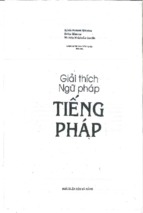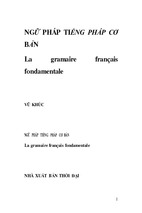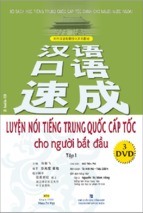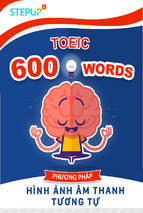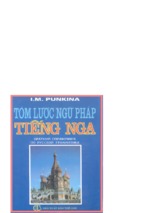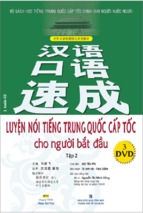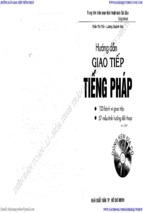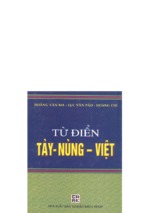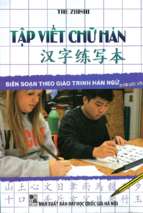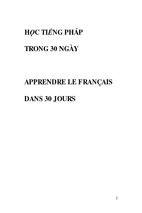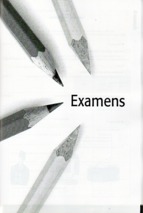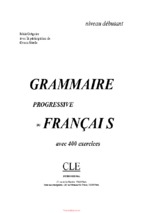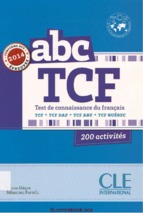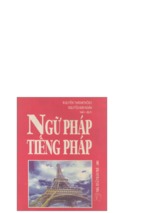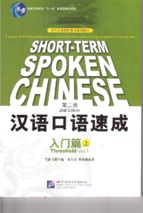A course in contemporary chinese 1 (textbook) (phần 1) A course in contemporary chinese 1 (textbook) (phần 1) A course in contemporary chinese 1 (textbook) (phần 1) A course in contemporary chinese 1 (textbook) (phần 1) A course in contemporary chinese 1 (textbook) (phần 1) A course in contemporary chinese 1 (textbook) (phần 1) A course in contemporary chinese 1 (textbook) (phần 1) A course in contemporary chinese 1 (textbook) (phần 1) A course in contemporary chinese 1 (textbook) (phần 1) A course in contemporary chinese 1 (textbook) (phần 1) A course in contemporary chinese 1 (textbook) (phần 1) A course in contemporary chinese 1 (textbook) (phần 1) A course in contemporary chinese 1 (textbook) (phần 1) A course in contemporary chinese 1 (textbook) (phần 1) A course in contemporary chinese 1 (textbook) (phần 1) A course in contemporary chinese 1 (textbook) (phần 1) A course in contemporary chinese 1 (textbook) (phần 1) A course in contemporary chinese 1 (textbook) (phần 1) A course in contemporary chinese 1 (textbook) (phần 1)
.............
.
··
!·
e
O-
··
··
·..
..
t',
•
..
.
Jf~
".:
•
-
..
..
.. ..
Foreword
"
,
•
e
e
e
e ••• e
•
e
e
'.
e
•
C
-
e
-
e
•
e_- e
e ·. e
•
•
e
• _••••
-
e - . , ••••••••••••••• e
•
e '.
e
c'
•• "
•••• ~
•
~ e
e
e ._ .
e
e
.. ... ....
1~~~* •• *
•• t~4~~1~6~,k*~M~.~A·~ •• ~.· ••• ~4~
~.*~* ••• o.~*.~~~~~~* •• ±,.±*~~~-~~+ •• '~+J~A
~~~~~.A,~.~M$~~~o
;f-.t·\.; ~ 1967 ~r1tH~d~~
Tt!lf.~~"'~.*-t% ' .3ir%-... 1t~.t~~ •• ~ifkif~lf.;t , ;f-. t .\.;~tt T .t~ •• 11-~
* giji-1f~ q 1t * ~ JIt 1:E- .i:. ~~ , $ 4Ji 18 1iL;f~ ;t * • f&"~ a~ ~ - .tt::t giji ~ ff ~ ~ .~~ ~ , .3i W5~·.,fij M~~~. · *t*::t~a.#~*.4 •• ~~ · *~~~~~ff •• ' ~ffT~~ < 't~t~
i',
*~1. > ~~~~ttt:
0
~k*t ~ M.~+~~4*
~1rHft~:tj;t!?~ttfll
•••• ~~M * ~±~.i:.*# ' ~~T.~£f , #~~~ ;
Ent •• ~aft$.;-t.~ , Jlt1:E;$J[ M ' ~~tt T
A. ~ Claudia Ross *~
.
~~~~~~.~·A.~~~t.~a*~~~~.~,~~.~~.'.3iW;f-.~~*~*~
.~;fO"7j(~.~~J]IJMhM ±t~;fot~*~*lHf
0
~!:..#~;f-.
t
·\.;al;.'*i*11!!.t~§
t·\.; , ~1T T-
•• ~.~~~~M'.3i.~T::t~a.±~ili~'.~~'
~w.1.';::t~~T~~*tt'*~~;f-.~.o.~m~~.~~.t'~h~.~ •• I.·~
~~~~m;.~.M~~~~~·
+~.~*~·~%~m~::t~a.±,~~_~a~.~~.~o
~~~#~~ • • • ili~ •• R~~~~~'.~tt~.*~~h'~~.~~~ili~~h'
MhM~~~~$*#~.~£fM~o
~~~~,
<'t~t~*.>~R~*.±~ - $ ... m~~~.#'~t!::t~~~~~~'"
~* ••• o.~::t~~~m.'~+A~~~~~.~~.,t!~~~.~~,~*~~*~
7Hi-J.t~*.
' 1tt~~ ~'ff~ j:A
II ·
. . .....
'-"
.
0
••
· ........ ... ........................... . .............. . ............................. .
The Mandarin Training Center (MTC) at National Taiwan Normal University (NTNU) was established in
1956, and is the oldest, most comprehensive, and most pedagogically effective educational institute of its kind
in Taiwan. Every year over 3,000 international students are trained at MTC, and to the present day over 50,000
students representing more than 120 countries have walked through its doors, solidifying international renow!1'
MTC started producing teaching material in 1967, and has since completed over 50 textbooks, makip.g it a
frontrunner in the field of teaching Chinese as a second language. As the core books have been in circulation for
15 years already, many students and teachers agree that updates are in order, and that new materials should be
made to meet the modem demand. Changes in the social landscape, improved teaching methods, and innovations
in educational media are what prompted the production ofMTC's six-volume series, A Course in Contemporary
Chinese. The project responds to Chinese teaching needs both at home and abroad, and bolsters Taiwan's brand
of teaching material for Chinese as a second language.
With the goal of integrating theory and practice, and carrying forward the spirit of teaching Chinese as a
second language, MTC petitioned one of the field's most esteemed professors, Shou-Hsin Teng, to serve as chief
editor. A Course in Contemporary Chinese has been compiled and edited under his leadership, together with the
help of 18 seasoned Chinese teachers and the following four executive editors: Associate Research Fellow Liping
Chang, Tai-chi Chang, and Ru-pei Cai and Wen-wen Chang of the MTC teaching material development division.
MTC is presenting this brand new core material after half a century's worth of educational experience,
and we have taken extra care to ensure it is of uncompromised quality. We were delighted to have American
professors Claudia Ross, lianhua Bai , and Yea-fen Chen act as consultants, Professor Teh-Ming Yeh from
Taiwan, Professor Tao-chung Yao from the U.S., and Professor Xun Liu from China on the review committee,
and professors Ying Cherry Li and Yung-O Biq of NTNU's English department help with the respective
translation of vocabulary and grammar points. The material was first trialed at MTC and other language
centers around Taiwan for a year. The current version underwent numerous drafts, and materialized under the
careful guidance of the consultants, a sedulous reading from the review committee, and feedback from teachers
and students. As for the editorial process, we owe the greatest thanks to the indefatigable editorial team, the
professors and their invaluable input, and the teachers and students who were willing to trial the book.
An additional and special thanks is due to Linking Publishing Company, who put forth utmost effort
and professionalism in publishing this set of teaching material, allowing us to deliver a publication of superior
quality.
It is our hope that A Course in Contemporary Chinese is not merely a practical set of teaching materials
for stUdents, but also enriching for teachers and the entire teaching experience. We welcome comments from
instructors who have put the books into practice so that we can continue improving the material. Only then can
we keep furthering our contribution to the field of teaching Chinese as a second language, both in Taiwan and
abroad.
HaoJanChen
Director of the Mandarin Training Center
National Taiwan Normal University
III
From the Editor~s. 'De~k
.. '.-. ... .............. ' . ' .. ............................ .. ..... .. .. .. .. .
-
-;.
-
-
"
-~
-
-
Finally, after more than two years, volume one of our six-volume project is seeing the light of
day. The language used in A Course in Contemporary Chinese is up to date, and though there persists
a deep' generation gap' between it and my own brand of Chinese, this is as it should be. In addition
to myself, our project team has consisted of 18 veteran MTC teachers and the entire staff of the MTC
Section of Instructional Materials, plus the MTC Deputy Director. '
The field of L2 Chinese in Taiwan seems to have adopted the world-famous 'one child policy'.
The complete set of currently used textbooks was born a generation ago, and until now has been without
predecessor. We are happy to fill this vacancy, and with the title 'number two', yet we also aspire to
have it be number two in name alone. After a generation, we present a slightly disciplined contemporary
language as observed in Taiwan, we employ Hanyu Pinyin without having to justify it cautiously and
timidly, we are proud to present a brand-new system of Chinese parts of speech that will hopefully
eliminate many instances of error, we have devised two kinds of exercises in our series, one basically
structural and the other entirely task-based, each serving its own intended function, and finally we have
included in each lesson a special aspect of Chinese culture. Moreover, all this is done in full color,
the first time ever in the field of L2 Chinese in Taiwan. The settings for our current series is in Taipei,
Taiwan, with events taking place near the National Taiwan Normal University. The six volumes progress
from basic colloquial to semi-formal and finally to authentic conversations or narratives. The glossary
in vocabulary and grammar is in basically semi-literal English, not free translation, as we wish to guide
the readersllearners along the Chinese 'ways of thinking', but rest assured that no pidgin English has
been used.
I am ' a functional, not structural, linguist, and users of our new textbooks wit! find our
approaches and explanations more down to earth. Both teachers and learners will find that the content
resonates with their own experiences and feelings. Rote learning plays but a tiny part of our learning
experiences. In a functional frame , the role of the speaker often seen as prominent. This is natural, as
numerous adverbs in Chinese, as they are traditionally referred to, do not in fact modify verb phrases at
all. They relate to the speaker.
We, the field of Chinese as a second language, know a lot about how to teach, especially when
it comes to Chinese characters . Most L2 Chinese teachers world-wide are ethnically Chinese, and
teach characters just as they were taught in childhood. Truth is, we know next to nothing how adult
studentsllearners actually learn. characters, and other elements of the Chinese language. While we have
nothing new in this series of textbooks that contributes to the teaching of Chinese characters, I tried to
tightly integra~e teaching and learning through our presentation of vocabulary items and grammatical
structures. Underneath such methodologies is my personal conviction, and at times both instructors' and
learners' patience is requested. I welcome communication with all users of our new textbooks, whether
instructors or students/learners.
Shou-hsin Teng
IV
.:-.... ..::.~
About the Series
Series Introduction
This six-volume series is a comprehensive learning material that focuses on spoken language in the
first three volumes and written language in the latter three volumes. Volume One aims to strengthen daily
conversation and applications; Volume Two contains short essays as supplementary readings; Volume Three
introduces beginning-level written language and discourse, in addition to extended dialogues. Volume Four uses
discourse to solidify the learner's written language and ability in reading authentic materials; Volumes Five and
Six are arranged in topics such as society, technology, economics, politics, culture, and environment to help the
learner expand their language utilizations in different domains.
Each volume includes a textbook, a student workbook, and a teacher's manual. In addition, Volume One
and Two include a practice book for characters.
Level of Students
A Course in Contemporary Chinese {11; 1~ tf X. ~*;f£} is suitable for learners of Chinese in Taiwan, as
well as for high school or college level Chinese language courses overseas. Volumes One to Six cover levels Al
to C 1 in the CEFR, or Novice to Superior levels in ACTFL Guidelines.
Overview
o
The series adopts communicative language teaching and task-based learning to boost the learner's Chinese
ability.
• Each lesson has learning objectives and self-evaluation to give the learner a clear record of tasks completed.
o
Lessons are authentic daily situations to help the learner learn in natural contexts.
o
Lexical items and syntactic stmctures are presented and explained in functional, not stmctural, perspectives.
• Syntactic, i.e. grammatical, explanation includes functions, stmctures, pragmatics, and drills to guide the
learner to proper usage.
o
Classroom activities have specific learning objectives, activities, or tasks to help fortify learning while
having fun.
o
The "Bits of Chinese Culture" section of the lesson has authentic photographs to give the learner a deeper
look at local Taiwanese culture.
o
Online access provides supplementary materials for teachers & students.
v
••••••• e
~
I
I
. '- e . e
• .. • . • ' • • .,
. '.
;. • • • • • • ,•
• ' .
"
•
e
. , e .• • • • ' .
'• • e
•• •
•••
~.
• ' . ..
. . .. . . . . . .
Ii '.
•
If
Foreword
II
.:t J~ EtJ -tfl
From the Editor's Desk
IV
~ JIJ},\t T
About the Series
:~""E.Ai.71
)1 ,"0
An Introduction to the Chinese Language
"
~~
V
,j
..j
:i
:1
I , 00
~
ij
• -%-- -t* :£ ,W,,s
VIII
Highlights of Lessons
XVIII
Parts of Speech in Chinese
XXIV
~
j
~~
"
~~
~*
£>
U
X
*-
ffl ~1i.
XXV
Classroom Phrases
0' 0
AAbJl'I~g
XXVI
Introduction to Characters
.tit ifE 1~UR :I: ~~. ! --------------------------------------- 1
\,,~::_~~_)
Welcome to Taiwan!
aEtJ ~A ----------------- 23
My Family
3l!*1t11tJt:" ? - - - - -- - , - - - - - - - - - - - 43
What Are You Doing Over the Weekend?
~t
r", - # 7 Y il: ? -----------------------------------:--
65
Excuse Me. How Mu ch Does That Cost LTl Total?
4- ~~Jt*ft1t------------------
85
B eef Noodles Are Really Delicious
%1r~ ~{~4 JJ J : - - - --
- --
Their School Is Up in the Mountains
VI
- - - - - - - --
103
.. • • '
............ ........................................................................
-f J:..fL:W-);; _!_ KTV ---------------------------------131
Going to KIV at 9 O'clock in the Morning
~ *_ _'_ -!- ~
m---------------159
Taking a Train to Taimm
;oJ:. 1~1 _!_ u}j~ if- J;(. ? ---------------------------------181
Lesson 9
Where Will You Go for the Holidays?
~ ;~~ ag 7j(. *-1~ -3ff
crt
- --------------------------------201
The Fm it in Taiwffil Tastes Really Good
a~~ii ~
-r - - --
- -- -- -- -- --
-
-
223
I Would Like to Rent a Place
1~ -tE ~;~
tF y A ag tf :)( ? ----------------------------- 245
How Long Will You Be Studying Chinese in Taiwan ?
1- El
+* ~ --------------------------------------- 269
Happy Birthday
7d~Lit~c;t!
- - - -- - - - - - - - - -- -- - - - -- 299
It's So Cold!
a1~~it}j1i
- - -- - --
-
-
-
- - --
-
-
-323
I Don't Feel Well
_
Appendix
II.
t
1-"t~ t
III.
fi.!j:ltt "*:)(:ff;-:#f Text in Simplified Characters
I.
1-"t~
*
iJ) Vocabulary Index (Chinese-English) - - - - -- - -- - -- --351
iJ) Vocabulary Index (English~Chinese)
359
368
VII
.· ·"1 -a···
...
- ··..
/
'
1212
\
An Introduction to the Chines~ Language
\. 1t~g ./ ...........
.... ....... .... .... ....... ... .. .... .. .. .... ..... ... .... .
....
-
.
. ...
-
-
.
-
China is a multi-ethnic society, and when people in general study Chinese, 'Chinese' usually refers to the
Beijing variety of the language as spoken by the Han people in China, also known as Mandarin Chinese or simply
Mandarin. It is the official language of China, known mostly domestically as the Putonghua, the lingua franca, or
Hanyu, the Han language. In Taiwan, Guoyu refers to the national/official language, and Huayu to either Mandarin
Chinese as spoken by Chinese descendants residing overseas, or to Mandarin when taught to non-Chinese learners.
The following pages present an outline of the features and properties of Chinese. For further details, readers are
advised to consult various and rich on-line resources.
Language Kinship
Languages in the world are grouped together on the basis of language affiliation, called language-family.
Chinese, or rather Hanyu, is a member of the Sino-Tibetan family, which covers most of China today, plus parts of
Southeast Asia. Therefore, Tibetan, Burmese, and Thai are genetically related to Hanyu.
Hanyu is spoken in about 75% of the present Chinese territory, by about 75% of the total Chinese population,
and it covers 7 major dialects, including the better known Cantonese, Hokkienese, Hakka and Shanghainese.
Historically, Chinese has interacted highly actively with neighboring but unaffiliated languages, such as
Japanese, Korean and Vietnamese. The interactions took place in such areas as vocabulary items, phonological
structures, a few grammatical features and most importantly the writing script.
Typological Features of Chinese
Languages in the world are also grouped together on the basis of language characteristics, called language
typology. Chinese has the following typological traits , which highlight the dissimilarities between Chinese and
English.
A. Chinese is a non-tense language. Tense is a grammatical device such that the verb changes according
to the time of the event in relation to the time of utterance. Thus ' He talks nonsense' refers to his habit, while 'He
talked nonsense' refers to a time in the past when he behaved that way, but he does not necessarily do that all the
time. 'Talked'then is a verb in the past tense. Chinese does not operate with this device but marks the time of events
with time expressions such as 'today' or 'tomorrow' in the sentence. The verb remains the same regardless of time
of happening. This type of language is labeled as an atensallanguage, while English and most European languages
are tensal languages. Knowing this particular trait can help European learners of Chinese avoid mistakes to do with
verbs in Chinese. thus, in responding to 'What did you do in China last year?' Chinese is ' I teach English (last
year)' ; and to ' What are you doing now in Japan?' Chinese is again ' I teach English (now)'.
B. Nouns in Chinese are not directly countable. Nouns in English are either countable, e.g. 2 candies, or
non-countable, e.g. *2 saits, while all nouns in Chinese are non-countable. When they are to be counted, a measure,
_VIII
p
I
....................................................................................
or called classifier, must be used between a noun and a number, e.g. 2-piece-candy. Thus, Chinese is a classifier
language. Only non-countable nouns in English are used with measures, e.g. a drop of water.
Therefore it is imperative to learn nouns in Chinese together with their associated measures/classifiers. There are
only about 30 high-frequency measures/classifiers in Chinese to be mastered at the initial stage ofieaming.
c. Chinese is a Topic-Prominent language. Sentences
in Chinese quite often begin with somebody or
something that is being talked about, rather than the subject of the verb in the sentence. This item is called a topic in
linguistics. Most Asian languages employ topic, while most European languages employ subject. The following bad
English sentences, sequenced below per frequency of usage, illustrate the topic structures in Chinese.
*Senator Kennedy, people in Europe also respected.
*Seafood, Taiwanese people love lobsters best.
*President Obama, he attended Harvard University.
Because of this feature, Chinese people tend to speak 'broken' English, whereas English speakers tend to sound
'complete', if bland and alien, when they talk in Chinese. Through practice and through keen observations of what
motivates the use of a topic in Chinese, this feature of Chinese can be acquired eventually.
D. Chinese tends to drop things in the sentence. The 'broken' tendencies mentioned above also include
not using nouns in a sentence where English counterparts are 'complete'. This tendency is called dropping, as
illustrated below through bad English sentences.
Are you coming tomorrow? ----- *Come!
What did you buy? ----- *Buy some jeans.
*This bicycle, who rides? ----- *My old professor rides.
The 1st example drops everything except the verb, the 2nd drops the subject, and the 3rd drops the object.
II.
..,
Dropping happens when what is dropped is easily recoverable or identifiable from the contexts or circumstances. Not
doing this, Europeans are often commented upon that their sentences in Chinese are too often inundated with unwanted
pronouns! !
Phonological Characteristics of Chinese
Phonology refers to the system of sound, the pronunciation, of a language. To untrained ears, Chinese language
sounds unfamiliar, sort of alien in a way. This is due to the fact that Chinese sound system contains some elements
that are not part of the sound systems of European languages, though commonly found on the Asian continent. These
features will be explained below.
IX
On the whole, the Chinese sound system is not really very complicated. It has 7 vowels, 5 of which are found
in English (i, e, a, 0 , u), plus 2 which are not (-e,); and it has 21 consonants, 15 of which are quite common, plus 6
which are less common (zh, ch, sh, r, z, c). And Chinese has a fairly simple syllable shape, i.e. consonant + vowel
plus possible nasals (n or ng). What is most striking to English speakers is that every syllable in Chinese has a 'tone' ,
as will be detailed directly below. But, a word on the sound representation, the pinyin system, first.
A. Hanyu Pinyin. Hanyu Pinyin is a variety of Romanization systems that attempt to represent the sound
of Chinese through the use of Roman letters (abc . .. ). Since the end of the 19th century, there have been about half a
dozen Chinese Romanization systems, including the Wade-Giles, Guoyu Luomazi, Yale, Hanyu Pinyin, Lin Yutang,
and Zhuyin Fuhao Di'ershi, not to mention the German system, the French system etc. Thanks to the consensus of
media worldwide, and through the support of the UN, Hanyu Pinyin has become the standard worldwide. Taiwan
is probably the only place in the world that does not support nor employ Hanyu Pinyin. Instead, it uses non-Roman
symbols to represent the sound, called Zhuyin Fuhao, alias BoPoMoFo (cf. the symbols employed in this volume).
Officially, that is. Hanyu Pinyin represents the Chinese sound as follows.
b, p, m, f
d, t, n, I
a,
ai, ei, ao, ou
0,
-e, e
g, k, h
j, q, x
zh, ch, sh, r
an, en, ang, eng
z, c, s
-r, i, u, ti
B. Chinese is a tonal language. A tone refers to the voice pitch contour. Pitch contours are used in many
languages, including English, but for different functions in different languages. English uses them to indicate the
speaker's viewpoints, e.g. 'well' in different contours may indicate impatience, surprise, doubt etc. Chinese, on the
other hand, uses contours to refer to different meanings, words. Pitch contours with different linguistic functions are
not transferable from one language to another. Therefore, it would be futile trying to learn Chinese tones by looking
for or identifying their contour counterparts in English.
Mandarin Chinese has 4 distinct tones, the fewest among all Han dialects, i.e. level, rising, dipping and
falling, marked - / v " , and it has only one tone-change rule, i.e. v v -7 / v, though the conditions for this
change are fairly complicated. In addition to the four tones, Mandarin also has one neutral(ized) tone, i.e .• ,
pronounced short/unstressed, which is derived, historically if not synchronically, from the 4 tones; hence the
term neutralized. Again, the conditions and environments for the neutralization are highly complex and cannot be
explored in this space.
C. Syllable final -r effect (vowel retroflexivisation). The northern variety of Hanyu, esp. in Beijing,
is known for its richness in the -r effect at the end of a syllable. For example, 'flower ' is 'hu~i' in southern China
but 'huar' in Beijing. Given the prominence of the city Beijing, this sound feature tends to be defiried as standard
nationwide; but that -r effect is rarely attempted in the south. There do not seem to be rigorous rules governing
what can and what cannot take the - r effect. It is thus advised that learners of Chinese resort to rote learning in this
case, as probably even native speakers of northern Chinese do.
D. Syllables in Chinese do not 'connect'. 'Connect' here refers to the merging of the tail of a syllable
with the head ofa subsequent syllable, e.g. English pronounces 'at' + 'all' as 'at+tall', 'did' +'you' as ' did+dyou'
and 'that'+'is' as 'that+th'is' . On the other hand, syllables in Chinese are isolated from each other and do not
connect in this way. Fortunately, this is not a serious problem for English language learners, as the syllable
structures in Chinese are rather limited, and there are not many candidates for this merging. We noted above that
Chinese syllables take the form of CV plus possible 'n' and ' ng' . CV does not give rise to connecting, not even
in English; so be extra cautious when a syllable ends with 'n' or 'g' and a subsequent syllable begins with a V, e.g.
MInAo 'Fujian Province and Macao'. Nobody would understand 'min+nao'!!
E. Retroflexive consonants. 'Retroflexive' refers to consonants that are pronounced with the tip of the
tongue curled up (-flexive) backwards (retro-). There are altogether 4 such consonants, i.e. zh, ch, sh, and r. The
pronunciation of these consonants reveals the geographical origin of native Chinese speakers. Southerners do not have
them, merging them with z, c, and s, as is commonly observed in Taiwan. Curling up of the tongue comes in various
degrees. Local Beijing dialect is well known for its prominent curling. Imagine curling up the tongue at the beginning
of a syllable and curling it up again for the -r effect!! ! Try 'zher-over here', 'zhuor-table' and 'shuIr-water'.
On Chinese Grammar
'Grammar' refers to the ways and rules of how words are organized into a string that is a sentence in a language.
Given the fact that all languages have sentences, and at the same time non-sentences, all languages including Chinese
have grammar. In this section, the most salient and important features and issues of Chinese grammar will be
presented, but a summary of basic structures, as referenced against English, is given first.
A. Similarities in Chinese and English.
I
SVO
They sell coffee.
Tamen mai karei.
AuxV+Verb
You may sit down!
NI key! zuoxia 6!
Adj+Noun
sour grapes
suan pUtao
Prep+its Noun
at home
zaijia
Num+Meas+Noun
a piece of cake
yikuaidangao
Demons+Noun
those students
naxie xuesheng
RelClause: Noun
the book that you bought
nl mai de shu
VPhrase: PrepPhrase
to eat at home
zaijia chIfan
Verb: Adverbial
Eat slowly!
Manmar chI!
B. Dissimilar structures.
XI
Set: Subset
6th Sept, 1967
1967 nian 9 yue 6 hao
Taipei, Taiwan
Taiwan Taibei
3 of my friends ...
wo de pengyou, you san ge .. .
C. Modifier precedes modified (MPM) . This is one of the most important grammatical principles in
Chinese. We see it operating actively in the charts given above, so that adjectives come before nouns they modify,
relative clauses also come before the nouns they modify, possessives come before nouns (tade diannao 'his computer'),
auxiliary verbs come before verbs, adverbial phrases before verbs, prepositional phrases come before verbs etc. This
principle operates almost without exceptions in Chinese, while in English modifiers sometimes precede and some other
times follow the modified.
D. Principle of Temporal Sequence (PTS). Components of a sentence in Chinese are lined up in
accordance with the sequence of time . This principle operates especially when there is a series of verbs contained
within a sentence, or when there is a sentential conjunction. First compare the sequence of 'units ' of an event in
English and that in its Chinese counterpart.
Event: David /went to New York! by train /from Boston! to see his sister.
English: 1
2
3
4
5
Chinese: 1
4
2
3
5
Now in real life, David got on a train, the train departed from Boston, it arrived in New York, and finally he
visited his sister. This sequence of units is 'natural' time, and the Chinese sentence 'Dawei zuo huoche c6ng Boshidllll
dao Niuyue qu kiln ta de jiej ie' follows it, but not English. In other words, Chinese complies strictly with PTS.
When sentences are conjoined, English has various possib ilities in organizing the conjunction. First, the
scenario. HINI hits China badly (event-I), and as a result, many schools were closed (event-2). Now, English has the
following possible ways of conjoining to express this, e.g.
Many schools were closed, because/since HINI hit China badly. (E2+EI)
HINI hit China badly, so many schools were closed. (EI +E2)
As HINI hit China badly, many schools were closed. (EI +E2)
Whereas the only way of expressing the same in Chinese is El+E2 when both conjunctions are used (ylnwei ...
suoyi.. .), i.e.
ZhOnggu6 ylnwei HINI ganran yanzhong (El), suoYI xUduo xuexiao zhanshi guanbi (E2) .
PTS then helps explain why ' cause' is always placed before 'consequence' in Chinese.
PTS is also seen operating in the so-called verb-complement constructions in Chinese, e.g. Sha-Sl 'kill+dead' ,
chI-bao ' eat+full', da-ku 'hit+cry' etc. The verb represents an action that must have happened first before its
consequence.
There is an interesting group of adjectives in Chinese, namely 'zao-early', 'wan-late', 'kwh-fast', 'man-slow',
'duo-plenty', and 'shao-few', which can be placed either before (as adverbials) or after (as complements) of their
associated verbs, e.g.
NT mingtian zao diar hii! (Come earlier tomorrow!)
Wa lai zao Ie. JinbUqu. (I arrived too early. I could not get in.)
When 'zao' is placed before the verb 'lai', the time of arrival is intended, planned, but when it is placed after,
the time of arrival is not pre-planned, maybe accidentaL The difference complies with PTS. The same difference holds
in the case of the other adjectives in the group, e.g.
Qlng nl duo mai liangge! (Please get two extra!)
Wa miiiduole. Zaota Ie! (I bought two too many. Going to be wasted!)
'Duo ' in the first sentence is going to be pre-planned, a pre-event state, while in the second, it's a post-event
report. Pre-event and post-event states then are naturally taken care of by PTS. Our last set in the group is more
complicated. 'Kwli' and 'man' can refer to amount of time in addition to manner of action, as illustrated below.
Nl kuai diar zau; yao chidao Ie! (Hurry up and go! You'll be late (e.g. for work)!)
QIng nl zau kuai yidiar! (Please walk faster!)
'Kuai' in the first can be glossed as 'quick, hurry up ' (in as little time as possible after the utterance), while that
in the second refers to manner of walking. Similarly, 'man yidiiir zau-don't leave yet' and 'zau man yidiiir-walk more
slowly'.
We have seen in this section the very important role in Chinese grammar played by variations in word-order.
European languages exhibit rich resources in changing the forms of verbs, adjectives and nouns, and Chinese, like
other Asian languages, takes great advantage of word-order.
E. Where to find subjects in existential sentences. Existential sentences refer to sentences in which
the verbs express appearing (e.g. coming), disappearing (e.g. going) and presence (e.g. written (on the wall)). The
existential verbs are all intransitive, and thus they are all associated with a subject, without any objects naturally. This
type of sentences deserves a mention in this introduction, as they exhibit a unique structure in Chinese. When their
subjects are in definite reference (something that can be referred to, e.g. pronouns and nouns with definite article in
English) the subject appears at the front of the sentence, i.e. before the existential verb, but when their subjects are in
indefinite reference (nothing in particular), the subject appears after the verb. Compare the following pair of sentences
in Chinese against their counterparts in English.
Keren dou lai Ie. ChiTan ba! (All the guests we invited have arrived. Let's serve the dinner.)
Duibuql! Uiwan Ie. Jiali laile yi ge keren. (Sorry for being late! I had an (unexpected) guest.)
More examples of post-verbal subjects are given below.
Zhe ci taireng sHe bu shiio reno (Quite a few people died during the typhoon this time.)
Zuotian wanshing xiate duojiu de yil? (How long did it rain last night?)
Zuotian wanshing paole jl ge fann:n? (How many inmates got away last night?)
XIII
Chezi Ii zuole dU6shiio ren a? (How many people were in the car?)
Exactly when to place the existential subject after the verb will remain a challenge for learners of Chinese for
quite a significant period of time. Again, observe and deduce!! Memorising sentence by sentence would not help!!
The existential subjects presented above are simple enough, e.g. people, a guest, rain and inmates. But when the
subject is complex, further complications emerge!! A portion of the complex subject stays in front of the verb, and the
remaining goes to the back of the verb, e.g.
Mingtian nlmen qujlge ren? (How many of you will be going tomorrow?)
W6 zuijin diaole btl shao tOUIa. (I lost=fell quite a lot of hair recently.)
Qunian dizhen, ta sHe san ge gege. (He lost=died 3 brothers during the earthquake last year.)
In linguistics, we say that existential sentences in Chinese have a lot of semantic and information structures
involved.
F. A tripartite system of verb classifications in Chinese. English has a clear division between verbs and
adjectives, but the boundary in Chinese is quite blurred, which quite seriously misleads English-speaking learners
of Chinese. The error in *W 6 jTntian shi mango 'I am busy today.' is a daily observation in Chinese 101! Why is it
a common mistake for beginning learners? What do our textbooks and/or teachers do about it, so that the error is
discouraged, if not suppressed? Nothing, much! What has not been realized in our profession is that Chinese verb
classification is more strongly semantic, rather than more strongly syntactic as in English.
Verbs in Chinese have 3 sub-classes, namely Action Verbs, State Verbs and Process Verbs. Action Verbs are
time-sensitive activities (beginning and ending, frozen with a snap-shot, prolonged), are will-controlled (consent or
refuse), and usually take human subjects, e.g. 'chI-eat', 'mai-buy' and 'xue-leam'. State Verbs are non-time-sensitive
physical or mental states, inclusive of the all-famous adjectives as a further sub-class, e.g. 'ai-love' , 'xIwang-hope'
and ' liang-bright' . Process Verbs refer to instantaneous change from one state to another, 'sl-die', 'po-break, burst' and
'wan-finish' .
The new system of parts of speech in Chinese as adopted in this series is built on this very foundation of this
tripartite verb classification. Knowing this new system will be immensely helpful in learning quite a few syntactic
structures in Chinese that are nicely related to the 3 classes of verbs, as will be illustrated with negation in Chinese in
the section below.
The table below presents some of the most important properties of these 3 classes of verbs, as reflected through
syntactic behaviour.
X
Le- completive
./
X
./
Zai- progressive
./
X
X
Reduplication
./ (tentative)
./ (intensification)
X
Bu- negation
./
./
X
Mei- negation
./
X
./
-'.-~
XIV
Here are more examples of 3 classes of verbs.
Action Verbs: mai ' buy', zuo ' sit', xue 'learn; imitate ' , kim ' look'
State Verbs: xlhuan 'like', zhIdao 'know', neng ' can', gui 'expensive'
Process Verbs: wangle 'forget', chen 'sink', biye 'graduate ', xing 'wake up'
G. Negation. Negation in Chinese is by means of placing a negative adverb immediately in front of a verb.
(Remember that adjectives in Chinese are a type of State verbs!) When an action verb is negated with 'bu', the
meaning can be either 'intend not to, refuse to' or 'not in a habit of', e.g.
N1 bli mai piao; w6 jiu bli rang nl jinqu! (If you don't buy a ticket, I won' t let you in!)
Ta zuotian zheng tian bil jie dianhua. (He did not want to answer the phone all day yesterday.)
Deng laoshI btl he jiu. (Mr. Teng does not drink.)
'Btl' has the meaning above but is independent of temporal reference. The first sentence above refers to the
present moment or a minute later after the utterance, and the second to the past. A habit again is panchronic. But when
an action verb is negated with 'mei(y6u)', its time reference must be in the past, meaning 'something did not come to
pass', e.g.
Til. mei Iii shangban. (He did not come to work.)
Til. mei dai qiin Iii. (He did not bring any money.)
A state verb can only be negated with ' btl', referring to the non-existence of that state, whether in the past, at
present, or in the future, e.g.
Til. bU zhIdao zhejian shi. (He did not/does not know this.)
Til. bu xiang gen nl quo (He did not/does not want to go with you.)
Niuyue zuijin btl reo (New York was/is/will not be hot.)
A process verb can only be negated with 'mei', referring to the non-happening of a change from one state to
another, usually in the past, e.g.
YIfli mei po; nl jili reng Ie? (You threw away perfectly good clothes?)
Niao hii mei Sl; nl jili fang Ie ba! (The bird is still alive. Why don't you let it free?)
Til. mei biye Ylqiin, hii dei dag6ng. (He has to work odd jobs before graduating.)
As can be gathered from the above, negation of verbs in Chinese follows neat patterns, but this is so only after
we work with the new system of verb classifications as presented in this series. Here's one more interesting fact
about negation in Chinese before closing this section. When some action verbs refer to some activities that result in
something stable, e.g. when you put on clothes, you want the clothes to stay on you, the negation of those verbs can be
usually translated in the present tense in English, e.g.
Til. zenrne mei chuan yIfU? (How come he is naked?)
W6 jIntian mei dai qiin. (I have no money with me today.)
xv
H. A new system of Parts of Speech in Chinese. In the system of parts of speech adopted in this series,
there are at the highest level a total of 8 parts of speech, as given below. This system includes the following major
properties. First and foremost, it is errors-driven and can address some of the most prevailing errors exhibited by
learners of Chinese. This characteristic dictates the depth of sub-categories in a system of grammatical categories.
Secondly, it employs the concept of 'default'. This property greatly simplifies the over-all framework of the new
system, so that it reduces the number of categories used, simplifies the labeling of categories, and takes advantage of
the learners' contribution in terms of positive transfer. And lastly, it incorporates both semantic as well as syntactic
concepts, so that it bypasses the traditionally problematic category of adjectives by establishing three major semantic
types of verbs, viz. action, state and process.
Adv
Adverb (dou 'all', dagai 'probably')
Conj
Conjunction (gen 'and', keshi 'but')
Det
Determiner (zhe 'this', na 'that')
M
Measure (ge, tiao; xia, ci)
N
Noun (wo 'I' , yongqi 'courage')
Ptc
Particle (rna 'question particle' , Ie 'completive verbal particle')
Prep
Preposition (cong ' from', duiyli ' regarding')
V
Action Verb, transitive (mai 'buy' , chi 'eat')
Vi
Action Verb, intransitive (kil 'cry ', zuo 'sit')
Vaux
Auxiliary Verb (neng 'can', xiang 'would like to')
V-sep
Separable Verb (jiehiln 'get married', shengqi 'get angry')
Vs
State Verb, intransitive (hao 'good', gui 'expensive')
Vst
State Verb, transitive (xIhuan ' like', zhTdao ' know ')
Vs-attr
State Verb, attributive (zhUyao 'primary', xiuzhen 'mini-')
Vs-pred
State Verb, predicative (gou 'enough' , duo ' plenty')
Vp
Process Verb, intransitive (sI 'die', wan 'finish')
Vpt
Process Verb, transitive (po (dong) 'lit. break (hole) , lie (feng) 'lit. crack (a crack))
Notes:
Default values: When no marking appears under a category, a default reading takes place, which has been
built into the system by observing the commonest patterns of the highest frequency. A default value can be loosely
understood as the most likely candidate. A default system results in using fewer symbols, which makes it easy on the
eyes, reducing the amount of processing. Our default readings are as follows.
Default transitivity. When a verb is not marked, i.e. V, it's an action verb. An unmarked action verb,
furthermore, is transitive. A state verb is marked as Vs, but if it's not further marked, it's intransitive. The same holds
for process verbs, i.e. Vp is by default intransitive.
Default position of adjectives. Typical adjectives occur as predicates, e.g. 'This is great!' Therefore,
unmarked Vs are predicative, and adjectives that cannot be predicates will be marked for this feature, e.g. zhiiyao
'primary' is an adjective but it cannot be a predicate, i.e. *Zhetiao lu hen zhiiyao. '*This road is very primary.'
Therefore it is marked Vs-attr, meaning it can only be used attributively, i.e. zhiiyao daolu 'primary road'. On the
other hand, 'gou' 'enough' in Chinese can only be used predicatively, not attributively, e.g. 'Shijian gou' '*?Time is
XVI
enough.', but not *gou shijian 'enough time'. Therefore gou is marked Vs-pred. Employing this new system of parts of
speech guarantees good grammar!
Default wordhood. In English, words cannot be tom apart and be used separately, e.g. *mis- not -understand.
Likewise in Chinese, e.g. *xlbUhuan 'do not like '. However, there is a large group of words in Chinese that are
exceptions to this probably universal rule and can be separated. They are called 'separable words', marked -sep in our
new system of parts of speech. For example, shengqi 'angry' is a word, but it is fine to say sheng fii qi 'angry at him'.
Jiehun 'get married' is a word but it's fine to say jieguOhiln 'been married before' orjieguo san ci hiln 'been married 3
times before' . There are at least a couple of hundred separable words in modern Chinese. Even native speakers have to
learn that certain words can be separated. Thus, memorizing them is the only way to deal with them by learners, and
our new system of parts of speech helps them along nicely. Go over the vocabulary lists in this series and look for the
marking -sep.
Now, what motivates this severing of words? Ask Chinese gods, not your teachers! We only know a little
about the syntactic circumstances under which they get separated. First and foremost, separable words are in most
cases intransitive verbs, whether action, state or process. When these verbs are further associated with targets (nouns,
conceptual objects), frequency (number of times), duration (for how long), occurrence (done, done away with) etc.,
separation takes pace and these associated elements are inserted in between. More examples are given below.
Wo jlnni:in yljlng kaoguo 20 ci shi Ie!! (I've taken 20 exams to date this year!)
WO daoguo qian Ie; ta h:ii shengqi! (I apologized, but he's still mad!)
Fang san tiiin jia; dajia dou zou Ie. (There will be a break of3 days, and everyone has left.)
Final Words
This is a very brief introduction to the modern Mandarin Chinese language, which is the standard world-wide.
This introduction can only highlight the most salient properties of the language. Many other features of the language
have been left out by design. For instance, nothing has been said about the patterns of word-formations in Chinese, and
no presentation has been made of the unique written script of the language. Readers are advised to search on-line for
resources relating to particular aspects of the language. For reading, please consult a highly readable best-seller in this
regard, viz. Li, Charles and Sandra Thompson. 1982. Mandarin Chinese: a reference grammar. DC Los Angeles Press.
(Authorised reprinting by Crane publishing Company, Taipei, Taiwan, still available as of October 2009).
XVII
I
Highlights of Lessons
................. .. .. ........... . .................. .. ....... .. .... .
o
I I. Learning simple greetings.
Introducing
Myself
Welcome to
Taiwan!
-
,~
-
2. Learning simple phrases to introduce people.
3. Learning simple phrases to discuss likes/
dislikes.
I I. Ways to Ask Questions in Chinese
I
A. Asking Questions with A-not-A
i B. Asking Questions with ~~ rna
12. Answering Questions in Chinese
4. Learning simple phrases to express gratitude. I
A. Affirmative Answers
I B. Negative Replies with ~ bu
i 3. Modification Marker flt hen
1, 4.Contrastive Questions with % ne
Family Members I. Learning to talk about people in my family
i members and their names.
My Family
2. Learning to describe people, places, and
possessions.
II. B~ de possessive
i2. Modifier Marker B~ de
!3. 1f you possessive
I, 4. ~~ dou totality
3. Learning to talk about the number of people :
!! 5. Measures 1m ge and ;;& zhang
in a family.
.
Hobbies
1 1~i'e~~i~~-t~-describe likes/dislikes (e.g.,
sports and movies).
What Are You
Doing Over the
Weekend?
i2. Learning to express what two groups have in
I common.
,
12. To Go Do Something with 1:; qu
3. Topic Sentences
'I'
14. The Word Order of Adverbs -t!!. ye, ~~ dou
! and '*" chang
v
3. Leamingtopolitely ask others their opinions and
make sunple suggestlons.
: 5 M k'
S
.
b
I . a mg uggestlOns ae, a
; 4. Learning to fonn choice questi ons.
i
!
c,--------
i I. Placement ofTime Words
' Shopping
---, l:i~~~i~gt;;ask and~k about prices~---·--i l. Measure~-Ji kwli, #bei,""i";hT a~d,ii-zhong
! 2. Learning to ask for reasons.
Excuse Me. How
Much Does That
Cost in Total?
i
13. Learning to use simple phrases to describe
;
the size and function of common objects.
!2. Preposition ~ bang on behalf of
13. ~ De-phrase with the Head Noun Omitted
!4. A tai· ·· T Ie overly
i 5. ~5 neng
i
i
I
j 6.
capability
J, duo ... and more
----------+------ --_....1.-----------_. .. -- ,.------- - - - - - - - - - - - - -.- . -o
iFood and Drink 11. Learni~g the names of common foods and i I . 1f - ~I; you yidii'm slightly
Beef Noodles Are
I
Really Delicious
I
I
descnbmg their taste..
I
i 2. ~earnmg to express likes for and make
II
simple comments about food .
I
I and how well one does it.
!
3. Learning to describe what somebody can/can't do
-.1.___
"
1
Locations and
Their School
Is Up in the
Mountains
Positions
4 . Learning to ask for help.
I.
Learning to describe locations (e.g" near or
- - ..
i 2. Complement Marker f~ de
Skills -t- hui
4 D . . M k
J d'
. estmatlOn ar er!' ao
1 3 . Acquired
!
!,
L
II.
Locative Marker.tE. ziti
12. Existential Sentence with 1f you
far) .
2. Learning to talk about place in the vicinity of i 3. Softened Action V ( - ) V
I
other places
/F ft. bushi Negation
3. Learning to make simple comments about
the appearance of a place.
5. Location of an Activity
.
14.
1
-~------------------~---
XVIII
·1
. 1
i
i
.. ..... ........ ................... ....... ........... ... ..................... ........
j
II
I. Tea Culture
I. The Tones
2. Chinese Nicknames
2. Third Tone Change
3. Bli ( ;r:: ) Tone Changes
·._ _____.____ __ ___
~ ~_ _ _ ___
Family Central to Chinese Culture
I
..
II. Pinyin Rules (1)
2. Tone Changes for - YT
Pinyin Rules (2)
A One-of-a-kind Leisure Activity Shrimp Fishing
-+------. - ------ ~~
Around-the-clock Conve nience Stores
Using Components to Learn Chinese
. Characters
_.- -~~- Basic Chinese Radicals
I . Pinyin Rules (3)
2. Tone Mark Rules (Position of the Tone
Marks)
I
I
1. Queuing up at Food Stands
·rl---------- --
. -----
Pinyin Rules (4)
--r--
IThe Earliest Chinese Characters
2. Street Vendors in Taiwan
i
I
_____...___________________.______________________~___.__. ._ _~ ____J___. _~___..____. _. __. ~ _~~_____~__________
The Six Categories of Chinese Characters
1. Taboos with the Number I'll si and Lucky
Numbers -;, !iii and A ba
2. Birth Rate vs. Private Schools
_XIX
.>0;
••
8
I. Learning to tell and ask about time.
Time
(Time-When and 2. Learning to describe an activity that takes
Time-Duration)
place at a point in time (time-when) or
during a certain frame (time-duration).
Going to KTV
at 9 O'clock in
the Morning
3. Learning to make appointments with
friends.
4. Learning to talk about habitual activities.
Transportation
I. Learning the names of different types of
transportation and talking about getting to
destinations.
Taking a Train
to Tainan
I. Time and Place of Events
2. -1:( cong··· flJ dao'" from A to B
3. Progressive, On-going Actions
14.
.if. zai
~ mei each and every
15. Of J.A keyi
permission
I
1. Companionship with ~lZ gen
! 2.
Asking How with
;tlf!' zen me
3. Implicit Comparison with
1
2 . Learning to talk about some one's plans for
their free time.
~t.~ bijiao
4. 5l you'" 5l you'" both A and B
5. Comparison with
3. Learning to make simple comparisons about
various modes of transportation.
~t.
bi
4. Learning to explain likes and dislikes.
I
Q
i I . Learning to use time expressions to describe i I. Time-When vs. Time-Duration
Leisure
;
events.
I
Where Will
You Go for the.
Holidays?
2. Time-Duration 'for a period of time'
: 2. Learning to discuss travel plans with
. friends.
13. Learning to talk about hypothetical
situations.
I
; 4. Learning to give suggestions about leisure
activ ities.
The Fruit in
Taiwan Tastes
Really Good
. The Appearance
; of People and
IThings
! I. Learning to give simple descriptions of
i
someone's appearance.
12. Learning to describe the color, smell, and
i taste offood.
,
13. Learning to briefly explain and give
reasons.
1
14. Learning to desclibe tentative activities and
.
---·------;enting a
;~~:---I:. ~earning to talk about renting a place to
hve.
2. Learning to talk about environment of a
room or a house.
3. Learning to make requests, e.g., to one's
landlord .
1
..--,-
iStudy, W"k
xx
I
I
sometimes ... sometimes .. .
is.Condition and Consequence with *k
i
yaoshi
;fA:. jiu ···
I
,,
I. V V ;;ij- kan to try and see
I!
2. Intensification with Reduplicated State Verbs
3. Clause as Modifiers of Nouns
4. Change in Situation with Sentential T Ie
5. Cause and Effect with l!J ill ylnwei .. · , fIT J:J.
suoyi" .
1
I Would Like to
Rent a Place
How Long Will
You Be Studying
Chinese in
Taiwan?
4. :1f aH~ you shihou ···:1f aH~ you shihou' "
changeable states.
I
i
3 .... !i-] a;H~ de shihou when
--
-
I
*- lai
3. Existential Subject with ';ff you
4. Different Types of 't- hui
5. Omitting Nouns at 2nd Mention
--
i I . Learning to discuss study plans and future
I
1. To Come to Do Something with
2. Sooner Than Expected with ;fA:. jill
plans.
2. Learning to talk about sequences of events.
1
3. Learning
to describe past actions and
I
.
expenence.
1.
;t xian ·" .jlj. zai .. · first ... , and then .. .
2. To Focus with
k
shi .. · 81] de
3. J:).1k. yihou after ...
4. Special Meanings of -!If hao / # m'ln + Verbs
- Xem thêm -

